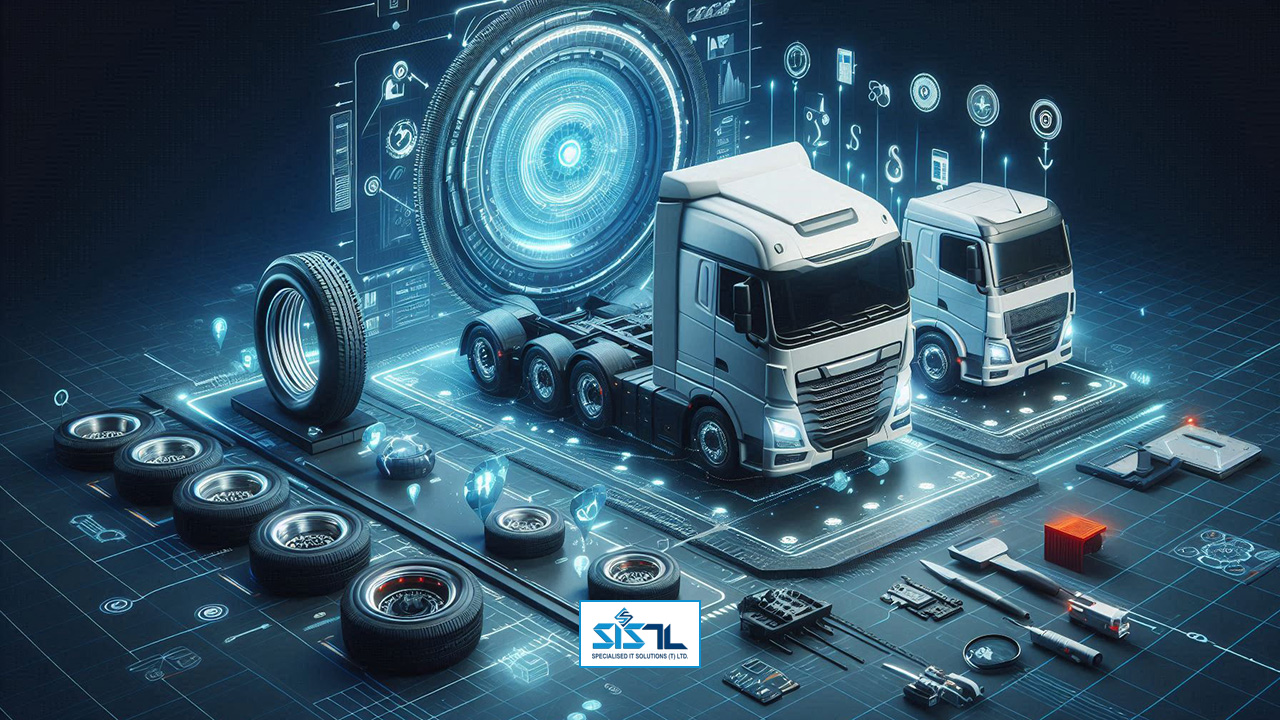
Tire Management System: A Vital Part of Fleet Solutions
In the world of fleet management, where every penny counts and efficiency reigns supreme, one often-overlooked element holds immense potential: tires. Tires are the unsung heroes of smooth operations, yet their mismanagement can spell disaster for fleet costs, driver safety, and environmental impact. This is where tire management systems (TMS) step in, transforming tires from a liability to a strategic asset.
A tire management system is a software application that helps businesses track and manage their fleet tires. These systems can track tire condition, mileage, and replacement schedules. They can also generate reports to help businesses identify areas where tire costs can be reduced.
Tires are one of the most important components of any fleet vehicle. They play a critical role in safety, performance, and fuel efficiency. As a result, it is important to have a tire management system in place to ensure that tires are properly maintained and replaced on a timely basis.
The Costly Consequence of Neglect
Ignoring tire health is a recipe for financial heartache. Underinflated or worn tires lead to increased fuel consumption, costing fleets thousands in wasted dollars. Uneven wear patterns contribute to premature replacement, further eating into budgets. And let\'s not forget the dreaded blowouts, causing downtime, repairs, and potential accidents with hefty insurance claims.
TMS: From Crisis Averter to Efficiency Booster
A robust TMS transcends the limitations of manual tire checks. It\'s a data-driven guardian, utilizing sensors, software, and AI to constantly monitor tire health in real-time. Here\'s how it works:
Tire Pressure Monitoring Systems (TPMS): Real-time pressure updates ensure optimal fuel efficiency and prevent sudden blowouts. Tread Depth Monitoring: Automated scanners track tread wear, triggering timely replacements before safety is compromised. Vibration Analysis: Sensors detect internal tire issues like imbalances or defects, preventing costly damage and downtime. Fleet Management Integration: Tire data seamlessly integrates with fleet management software, providing comprehensive insights into tire performance and costs.
The Benefits of a Smart Approach
The value of a TMS extends far beyond cost savings. It delivers a multi-pronged attack on operational inefficiencies:
Enhanced Safety: Proactive tire care keeps drivers safe and reduces accident risks. Reduced Downtime: Fewer tire-related breakdowns mean uninterrupted operations and maximized productivity. Extended Tire Life: Optimized pressure and wear monitoring increase tire longevity, decreasing replacement costs. Improved Fuel Efficiency: Correctly inflated tires roll smoother, burning less fuel and reducing environmental impact. Data-Driven Decisions: TMS analytics equip fleet managers with actionable insights for optimizing tire procurement, maintenance schedules, and driver training. Comply with regulations: A tire management system can help businesses to comply with regulations related to tire safety and maintenance.
How Tire Management Systems Can Be Used to Benefit Businesses
A delivery company can use a tire management system to track the tread wear of its delivery vehicles. This information can be used to identify vehicles that need new tires and schedule tire replacements accordingly. A construction company can use a tire management system to track the inflation pressure of its construction vehicles. This information can be used to identify vehicles that need their tires inflated and prevent premature tire failure. A transportation company can use a tire management system to track the mileage of its vehicles. This information can be used to schedule tire rotations and other preventive maintenance tasks.
The Diverse Landscape of TMS Solutions
No two fleets are alike, and neither are their tire management needs. TMS options cater to every fleet size and type, from basic on-board systems to cloud-based, enterprise-level solutions. Consider these factors when choosing a TMS:
Fleet size and composition: Different vehicles require different tire management strategies. Budget and operational needs: Choose a system that aligns with your financial and data access requirements. Integration with existing technologies: Ensure seamless compatibility with your fleet management software and hardware. Scalability and future needs: Invest in a system that can grow with your fleet and evolve with technological advancements.
Beyond the Technology: Building a Tire-Conscious Culture
A TMS is a powerful tool, but it\'s just one piece of the puzzle. Building a tire-conscious culture within your fleet is equally crucial. This involves:
Driver training: Educate drivers on the importance of proper tire care, early problem identification, and responsible driving habits. Incentive programs: Reward drivers for maintaining optimal tire health and reporting issues promptly. Regular maintenance schedules: Ensure timely tire rotations, balancing, and alignments to maximize tire life.
The Road Ahead: A Tireless Pursuit of Optimization
Implementing a TMS might seem like an additional expense, but it\'s an investment that quickly pays for itself. The cost savings from extended tire life, reduced breakdowns, and optimized fuel consumption far outweigh the initial investment. Consider it an insurance policy for your fleet\'s safety, efficiency, and bottom line.
The evolution of TMS is far from over. The future holds exciting possibilities like predictive maintenance algorithms, real-time road hazard alerts, and integration with self-driving technologies. As the landscape evolves, one thing remains constant: a robust tire management system will be an indispensable driver of efficiency, safety, and sustainability in the world of fleet operations.
By embracing the power of TMS and fostering a tire-conscious culture, fleet managers can ensure their vehicles roll smoothly towards a future of optimized performance, minimized costs, and a commitment to responsible, sustainable transportation. Let\'s make sure every tire in our fleets becomes a contributing factor to a safer, smarter, and more efficient journey for all.
Post a comment
40+
Consultingfarm
Connecting You To Smarter Solutions
Empower your fleet with revolutionary IoT solutions. Gain valuable insights from on-board footage with our AI vehicle camera. Optimize operations with real-time GPS vehicle tracking system. Enhance communication with instant Push-to-Talk functionality for your team, wherever they are.


Subscribe to our Newsletter
For the latest insights on AI Vehicle Cameras, GPS Tracking Solutions, Push-To-Talk technology, and exclusive industry updates







02 Comments
Jessica Rose
December 27, 2024Finanappreciate your trust greatly Our clients choose dentace ducts because know we are the best area Awaitingare really.
Parker Willy
December 28, 2024Finanappreciate your trust greatly Our clients choose dentace ducts because know we are the best area Awaitingare really.